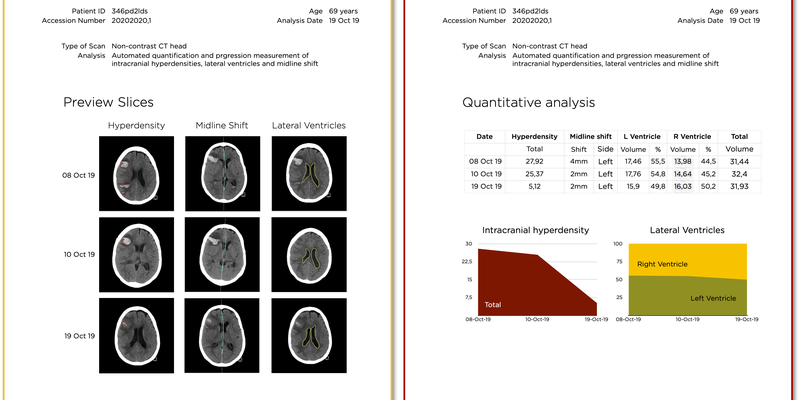
qER-Quant software by Qure.ai was used in this retrospective study to measure hematoma volume and midline shift (MLS) and quantify their relationship with age. Subdural hematoma volume and degree of MLS were measured from NCCT scans of 1789 acute subdural hematoma patients. Amongst other findings, the work showed that with increasing age, the ratio between MLS and hematoma volume significantly decreases (p=0.0002). The results were consistent with the qualitative relationship previously established between age, hematoma volume and MLS, and the need for an age-dependent interpretation of hematoma volume and MLS on imaging, which further validates the use of AI-based tools for acute subdural hematoma volume estimation. This validation supports future explorations of this AI tool to guide acute clinical treatment decisions and its use to facilitate the rapid analysis and standardization of radiographic measurements, after integration into existing imaging workflows.
Read full study
Abstract
Objective
Decision for intervention in acute subdural hematoma patients is based on a combination of clinical and radiographic factors. Age has been suggested as a factor to be strongly considered when interpreting MLS and hematoma volume data for assessing critical clinical severity during operative intervention decisions for acute subdural hematoma patients. The objective of this study was to demonstrate the use of an automated volumetric analysis tool to measure hematoma volume and midline shift (MLS) and quantify their relationship with age.
Methods
1789 acute subdural hematoma patients were analyzed using qER-Quant software (Qure.ai, Mumbai, India) for MLS and hematoma volume measurements. Univariable and multivariable regressions analyzed association between MLS, hematoma volume, age, and MLS-hematoma volume ratio.
Results
In comparison to younger patients (≤70 years), older patients (>70 years) had significantly higher average hematoma volume (old: 62.2 mL vs. young: 46.8 mL, p<0.0001), lower average MLS (old: 6.6 mm vs. young: 7.4 mm, p=0.025), and lower average MLS-hematoma volume ratio (old: 0.11 mm/mL vs. young 0.15 mm/mL, p<0.0001). Young patients had an average of 1.5mm greater MLS for a given hematoma volume in comparison to older patients. With increasing age, the ratio between MLS and hematoma volume significantly decreases (p=0.0002).
Conclusion
Commercially-available, automated, AI-based tools may be used for obtaining quantitative radiographic measurement data in patients with acute subdural hematoma. Our quantitative results are consistent with the qualitative relationship previously established between age, hematoma volume, and MLS, which supports the validity of using AI-based tools for acute subdural hematoma volume estimation.